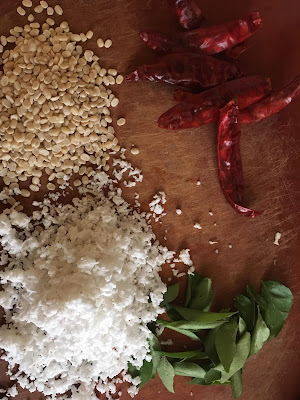Hola Cats!
We are (for the most part) what we know. And what I knew growing up was that good South Indian food was best left to the masters. Ordering south Indian thalis at restaurants and gorging my heart out when invited to the homes of South Indians.
Like many Bangloreans, I am the hugest fan of idli, dosa,sambar,rasam,poriyals,and kosambari. I am not well versed in the plethora of twists and tricks that summersault and perform acrobatics from state to state or for that matter region of state to region. I am barely know the difference between Mysore Masala Dosa and uh, regular masala dosa. I do know that some parts of Karnataka use more jaggery in their vegetables and sambars than say Tamilnadu. Some of you are probably just shaking your heads right now and saying, shut up Rheea, you are making a mess of things.
See, I grew up in a household with a Bengali father and Manglorean mother and lots of NRI seasoning thrown in for good measure. Not to mention we had a Bihari cook for many years growing up in Bangalore. The result was something I'd like to call 'generic Indian food'. Meaning garam masala, onions and ginger-garlic paste as the go-to base for literally everything.
Despite this, I loved south Indian food when I ate it from other tiffin boxes, homes and udipi hotels. In fact my go-to lunch is the standard south Indian thali minus the curd.
But I was too frightened to try to make basic poriyals and sambars at home. I mean considering some of the things didn't have onions or ginger garlic paste all mashed into one thing- how could I make it taste good? My upbringing had taught me that making tasty Indian food meant garam masala time!
When trying to create South Indian dishes, I am like that White friend you bring to India who immediately starts wearing a bindi and bangles. It's endearing but a little off, you know?
Anyway, I had no idea what to do with raw bananas, but today at the market I picked two up determined to make 'that thing I've seen on thalis'. Turns out one of the names for it is a tamil household recipe, Vazhakkai Poriyal. I might not be able to pronounce, but hell, I'll make it.
 |
| Optimism |
The best thing about many many south Indian vegetables and sambars is that they are default vegan. There is usually no milk or curd in them and if you don't add any ghee with your rice, TADAH- 100% vegan yo!
So thanks to Youtube, I managed quite well. I figured out how to conquer the raw banana.
For those of you who are in my predicament, I present Rheea'a Vazhakkai Poriyal. Notice how I put my name in front of the name and basically ignored generations of South Indians groaning ' No Rheea, that's really not your recipe at all'. Go ahead and apply my cooking colonisation to the most relevant global reality of your choice.
What You Need
2 peeled raw bananas
1/2 cup grated fresh coconut
1 teaspoon Hing (Asafoetida)
2 teaspoons mustard seeds
2 teaspoon turmeric
10-12 curry leaves
2 tablespoons Urad Daal (White Lentil)
2 tablespoons oil
Salt to taste
4-5 red dried red chilies
2 teaspoons jaggery powder (optional and possibly blasphemous)
How to Make
Peel your raw bananas with the help of a knife. You want to get to the whitish inside, but be careful not to peel too much off or you'll be left with too little of the banana meat. Cut them into small cubes.
Dump them into a pot and cover them with water and your turmeric. Let it boil for about 5 minutes.
 |
| Just boiling them bananas (with turmeric) |
Meanwhile get pan on the stove. Add oil and let it warm for a few seconds. Add urad daal, mustard seeds and hing (asafoetida) and stir for 15 seconds. Add curry leaves, red chilies and coconut now and stir for a minute till it gets nice and crispy (but not too crispy, lower the fire if it's burning).
Now add salt to the mix. Drain your boiling turmeric raw banana pieces and add to the pan. Stir together well and fry for another 3 minutes or so.
 |
| I did it! I did it! |
And you're done! So simple, so delicious. This is best had with white rice and sambar. If you want to make sambar you can youtube or be risky and look up my Coconut Sambar HERE.
Ok, I can already hear murmurs of people who want to add their few cents- how some of you would never consider using jaggery or would have added another spice. Or maybe you want to help us learn with alternate names/recipes and history of these foods. Please add your advice/corrections/history/anecdotes in the comments!
Till next time, keep it kind!





No comments:
Post a Comment